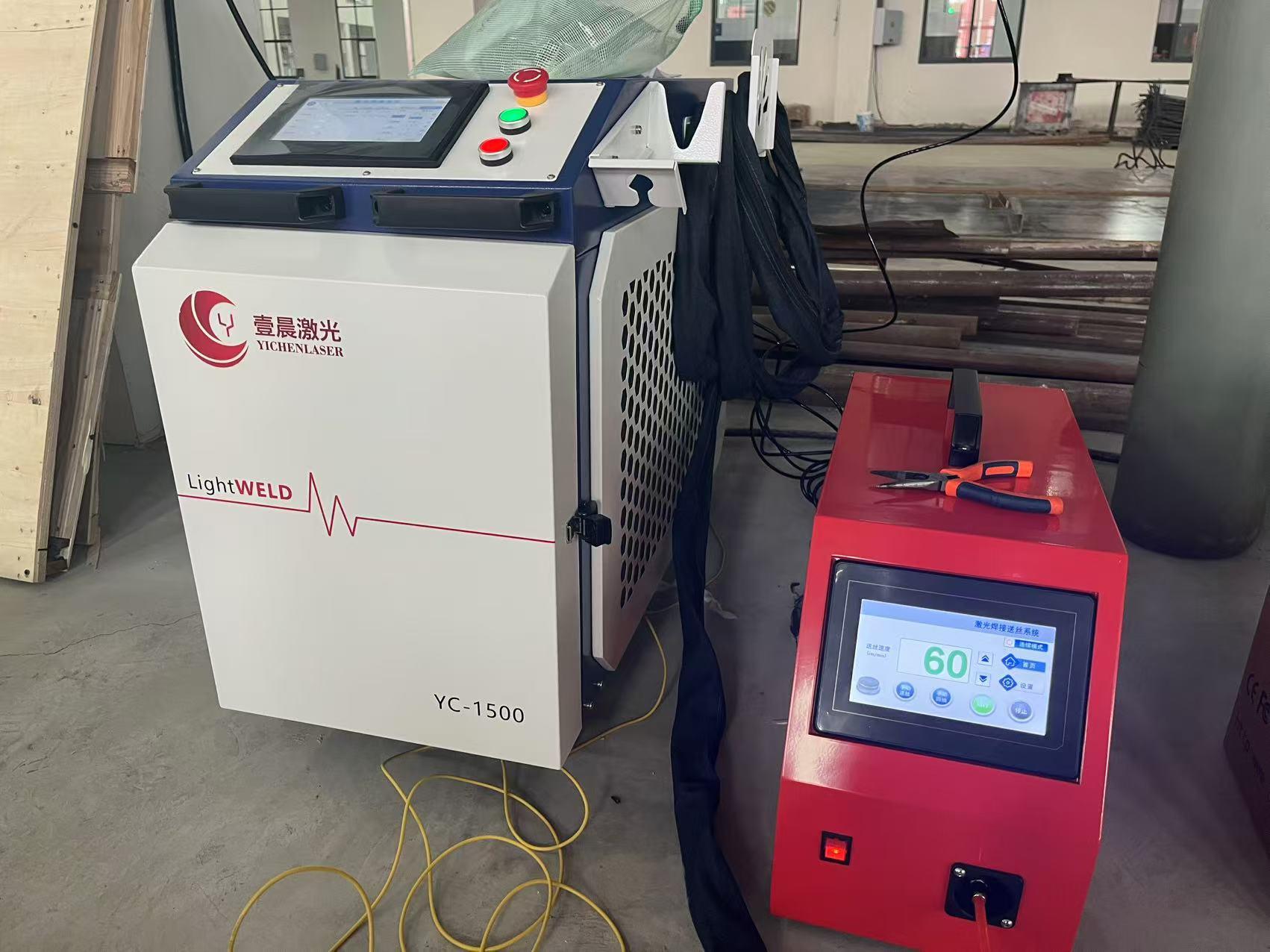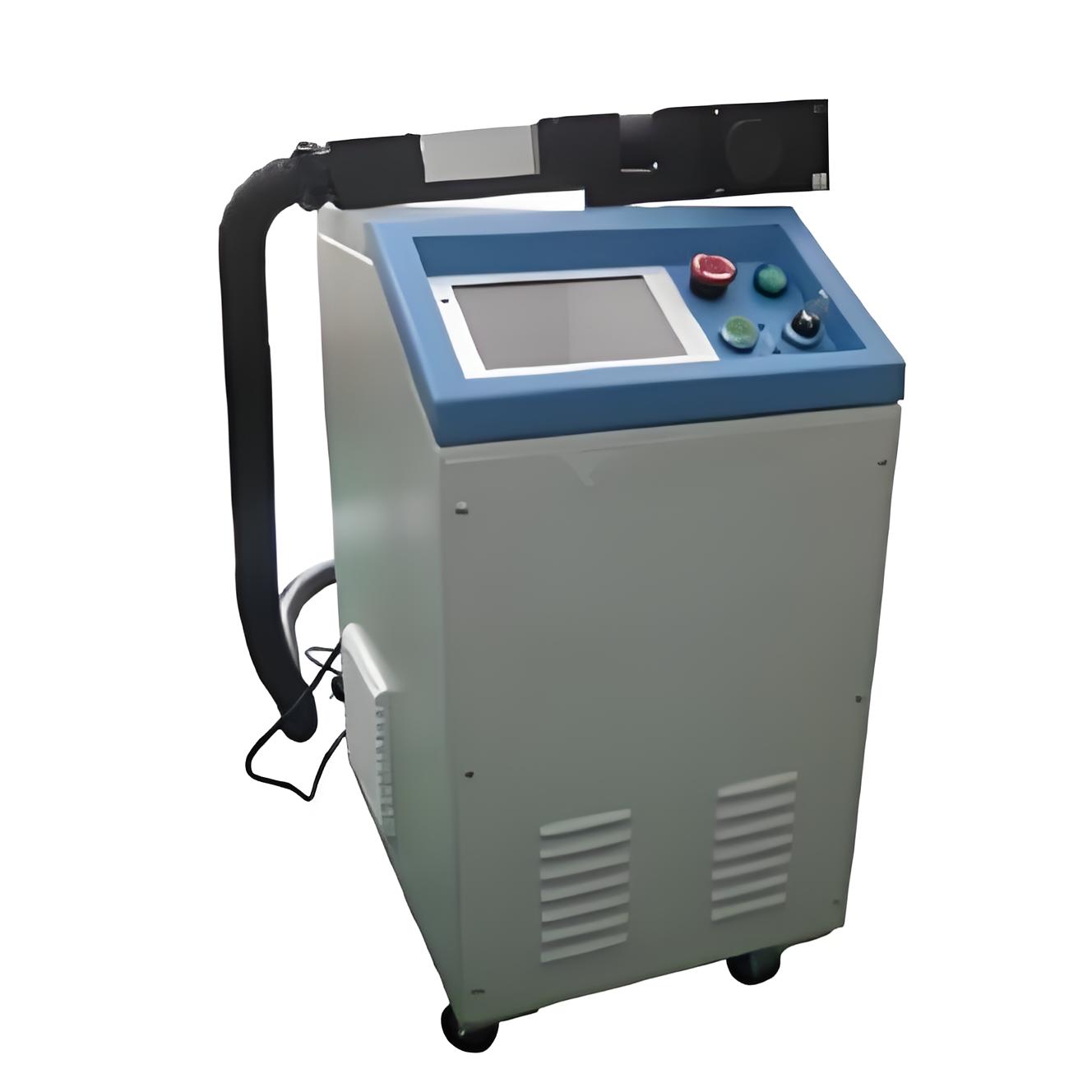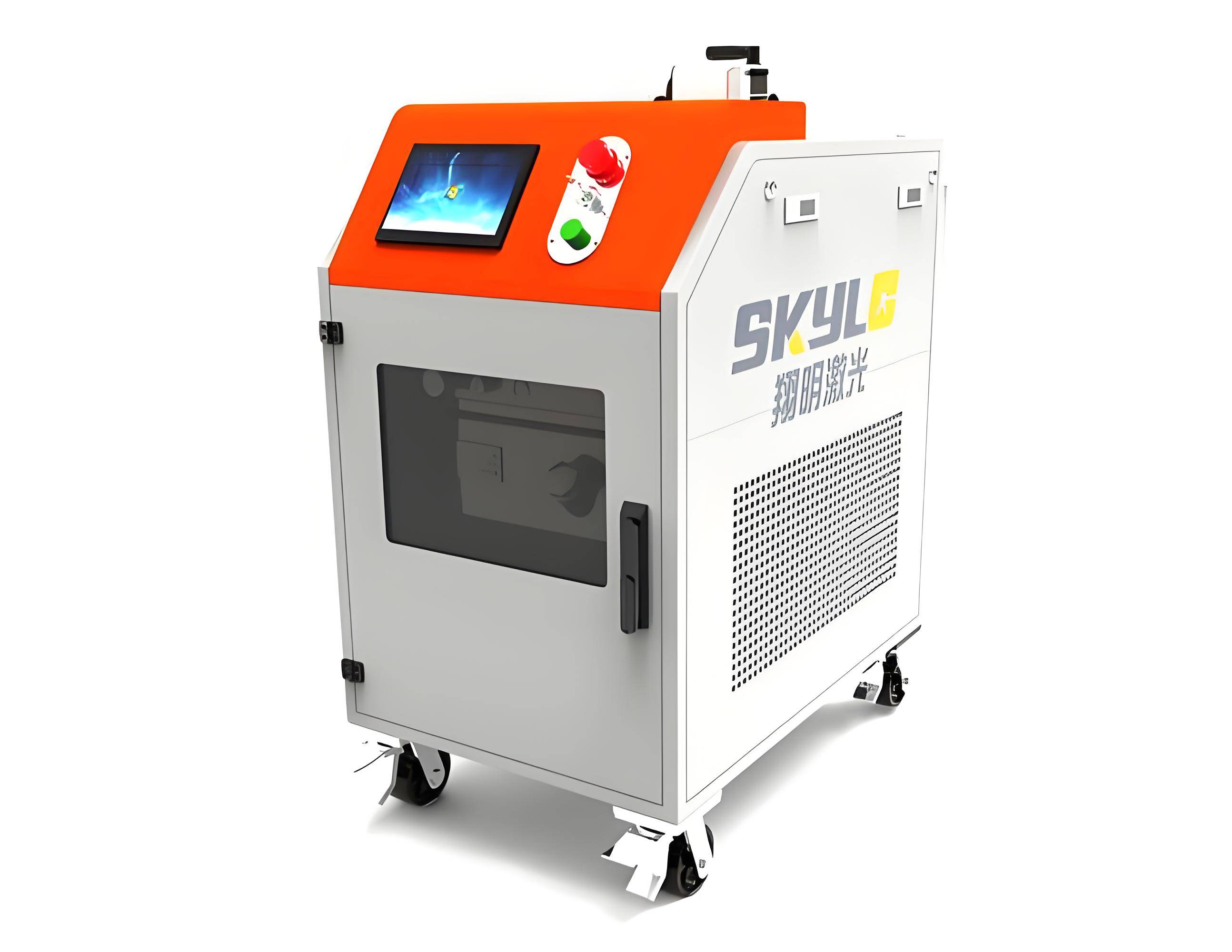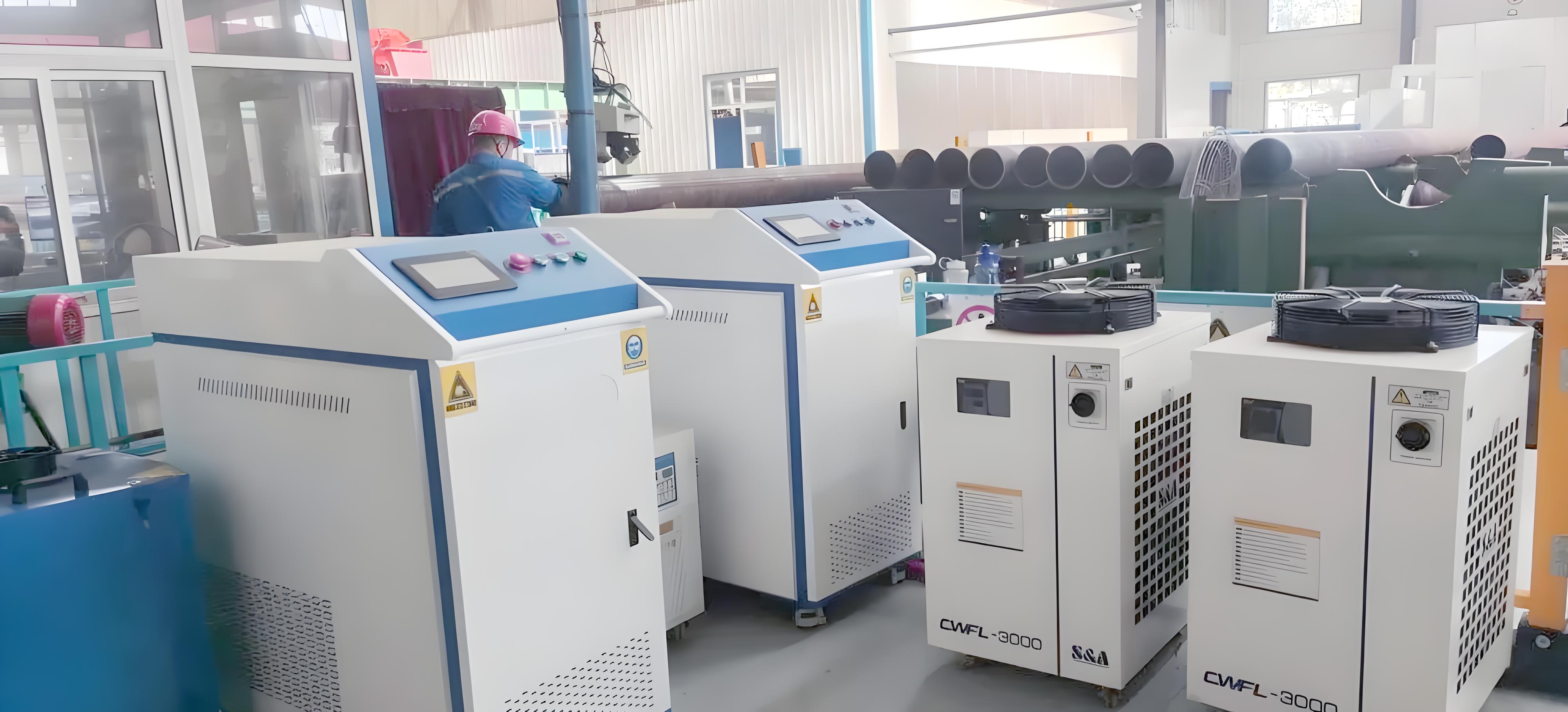As someone who’s spent years working with industrial cleaning technologies, I’ve seen firsthand how laser rust removal has transformed the way we tackle corrosion. When people ask me, “Is laser rust removal fast?” they’re usually weighing it against traditional methods like sandblasting or wire brushing, hoping for a quicker, cleaner solution. The short answer is: Yes, laser rust removal can be impressively fast, but the speed depends on several factors like the machine’s power, the rust’s severity, and the surface being treated. In this article, I’ll dive into how laser rust removal works, what affects its speed, how it compares to other methods, and tips to maximize efficiency. Whether you’re a DIY enthusiast restoring a vintage car or a professional cleaning industrial equipment, I’ll help you understand what to expect and how to get the fastest results.

How Does Laser Rust Removal Work?
To understand the speed of laser rust removal, let’s start with the basics. A laser rust removal machine uses a focused laser beam (typically a fiber laser with a wavelength of 1064nm) to vaporize rust, paint, or other contaminants from metal surfaces. The beam targets the rust, heating it to the point of ablation (turning it into gas or dust) without damaging the underlying metal. This process is non-contact, eco-friendly, and precise, making it a favorite for everything from restoring antiques to prepping industrial parts.
I first used a laser rust remover on a rusted steel beam during a factory maintenance job. In minutes, the surface went from crusty orange to shiny metal, and I was hooked. But speed isn’t just about the laser’s magic—it depends on how you use it and what you’re working with. Let’s break down the factors that influence how fast it works.
What Affects the Speed of Laser Rust Removal?
The speed of laser rust removal varies based on several key factors. Understanding these will help you set realistic expectations and optimize your workflow:
Laser Power
The power of the laser (measured in watts) is the biggest driver of speed. Low-power handheld units (50W-200W) are slower but great for small, delicate jobs. High-power industrial machines (500W-2000W) can blast through heavy rust much faster. For example, a 100W laser might take 10 minutes to clean a square meter of light rust, while a 1000W machine could do it in 2-3 minutes.

Rust Thickness and Type
Light surface rust (flash rust) is quick to remove, often requiring just one pass. Thick, layered rust or oxide scales take longer, as you may need multiple passes or higher power settings. I once cleaned a lightly rusted toolbox in under 5 minutes with a 100W laser, but a heavily corroded ship part took over an hour with multiple passes.
Surface Area and Complexity
Flat surfaces are faster to clean than intricate shapes or curved parts. For example, cleaning a flat steel plate is a breeze, but working on a rusted engine block with nooks and crannies slows things down because you need to adjust angles and settings carefully.
Operator Skill
An experienced operator can optimize settings like pulse frequency, scan speed, and beam width to maximize efficiency. Beginners might take longer as they experiment with settings. When I started, I was cautious and moved slowly, but after a few hours, I was zipping through projects by fine-tuning the machine.
Machine Settings
Pulse Frequency: Higher frequencies (20-50 kHz) are faster for light rust but less effective for thick layers. Lower frequencies (5-10 kHz) are slower but better for heavy rust.
Scan Speed: Faster scan speeds cover more area but may require multiple passes for stubborn rust.
Beam Width: A wider beam cleans larger areas quickly but sacrifices precision for delicate work.
Environmental Conditions
Dust, humidity, or poor ventilation can slow the process by interfering with the laser’s focus or cooling system. I’ve found that working in a clean, well-ventilated space keeps the machine running at peak performance.
Here’s a table summarizing how different laser powers affect cleaning speed for common scenarios:
| Laser Power | Rust Type | Approx. Speed (m²/hour) | Best Use Case |
|---|---|---|---|
| 50W-100W | Light rust | 0.5-1 | Small DIY projects, delicate surfaces |
| 200W-300W | Light to medium rust | 1-2 | Medium-scale jobs, automotive parts |
| 500W-1000W | Medium to heavy rust | 2-5 | Industrial equipment, large surfaces |
| 1000W-2000W | Heavy rust, thick coatings | 5-10 | Heavy-duty industrial applications |
How Does Laser Rust Removal Compare to Other Methods?
To gauge whether laser rust removal is “fast,” let’s compare it to traditional methods like sandblasting, chemical cleaning, and wire brushing. Each has its strengths, but speed varies significantly:
Sandblasting: Fast for large, flat surfaces (5-10 m²/hour), but setup and cleanup (masking, containing abrasive media) can take hours. It’s also abrasive, risking damage to delicate metals.
Chemical Cleaning: Slow (1-3 m²/hour), as chemicals need time to break down rust, plus additional time for application and rinsing. It’s messy and hazardous.
Wire Brushing: Very slow (0.1-0.5 m²/hour), labor-intensive, and imprecise, often leaving scratches.
Laser Rust Removal: Fast (0.5-10 m²/hour, depending on power), with minimal setup and no cleanup of abrasives or chemicals. It’s also non-damaging to the base metal.
In one project, I compared a 200W laser to sandblasting for cleaning a rusted steel gate. The laser took 15 minutes to clean 1 m², while sandblasting took 10 minutes but required an hour of setup and cleanup. The laser’s speed and convenience won out.

Here’s a comparison table:
| Method | Speed (m²/hour) | Setup/Cleanup Time | Pros/Cons |
|---|---|---|---|
| Laser Rust Removal | 0.5-10 | Minimal (5-10 min) | Fast, eco-friendly; higher equipment cost |
| Sandblasting | 5-10 | High (1-2 hours) | Fast but messy, abrasive |
| Chemical Cleaning | 1-3 | Moderate (30-60 min) | Slow, hazardous, messy |
| Wire Brushing | 0.1-0.5 | Minimal (5-10 min) | Very slow, labor-intensive, imprecise |
Tips to Maximize Laser Rust Removal Speed
Based on my experience, here are practical ways to make laser rust removal as fast as possible without sacrificing quality:
Choose the Right Machine
Match the laser’s power to your task. For small DIY projects (e.g., cleaning tools), a 50W-100W handheld unit is sufficient and fast enough. For large industrial jobs, invest in or rent a 500W+ machine. I once rented a 1000W laser for a shipyard project, and it cut cleaning time in half compared to a 200W unit.
Optimize Settings
Start with a test run on a scrap piece to find the fastest effective settings. For light rust, use high frequency and fast scan speed. For heavy rust, lower the frequency and slow the scan speed.
Use pre-set modes if your machine has them—they’re often optimized for common tasks.
Adjust the beam width to cover more area for flat surfaces or narrow it for precision work.

Prepare the Surface
Brush off loose rust or debris before starting. This reduces the laser’s workload and speeds up the process. I’ve found that a quick sweep with a wire brush can shave minutes off a job.
Work in a Clean Environment
Dust or humidity can scatter the laser beam, slowing progress. Set up in a well-ventilated, dry area, and clean the laser lens regularly with a microfiber cloth and lens cleaner.
Use Steady, Overlapping Passes
Move the laser head in smooth, overlapping sweeps, like painting, to cover the area efficiently. Lingering too long in one spot wastes time and risks damaging the metal. I learned this the hard way when I over-cleaned a steel plate, creating uneven spots.
Maintain the Machine
A dirty lens or overheating machine slows performance. Clean the lens after each use and ensure the cooling system (air or water) is functioning. During a long project, I take short breaks to let the machine cool, keeping it at peak speed.
Practice for Efficiency
The more you use the machine, the faster you’ll get. Spend an hour practicing on scrap metal to master the controls and develop a rhythm. My first few jobs were slow, but now I can clean large surfaces in half the time.

Real-World Examples
Last year, I used a 200W handheld laser to clean rust off a vintage motorcycle frame. The light rust on the flat sections took about 10 minutes per square meter, and the entire frame was done in under an hour. The speed was a game-changer compared to the wire brushing I’d done in the past, which would’ve taken all day.
On another project, I tackled a heavily rusted industrial pipe with a 500W laser. The thick rust required multiple passes, slowing the process to about 3 m²/hour, but it was still faster and cleaner than sandblasting, which would’ve needed extensive masking to protect nearby equipment. These experiences showed me that laser rust removal’s speed shines for light to medium rust but requires patience for heavy corrosion.
Limitations and Considerations
While laser rust removal is fast, it’s not a magic bullet. Here are some limitations to keep in mind:
Heavy Rust: Thick, layered rust slows the process, as you may need multiple passes or higher power, which can overheat the machine if not managed properly.
Complex Shapes: Intricate parts like gears or sculptures take longer due to the need for precise angles and settings.
Cost: High-power lasers are expensive (often $10,000-$50,000), so for occasional use, renting or hiring a professional may be more cost-effective.
Safety: Speed comes with responsibility. Always wear laser safety glasses and follow protocols to avoid eye or skin damage.

My Personal Take
When I first tried laser rust removal, I was skeptical about the hype. But after using a 100W unit to clean a rusted toolbox in minutes, I was sold. The speed was incredible compared to the hours I’d spent scrubbing with a wire brush. Later, working on a factory project with a 1000W laser, I cleaned a massive steel structure in half a day—what would’ve taken a week with sandblasting. The key was learning to tweak settings and move efficiently, which came with practice.
These experiences taught me that laser rust removal is fast when used correctly, but it’s not a one-size-fits-all solution. Matching the machine to the job and optimizing your technique are crucial for speed.
Conclusion
Laser rust removal is one of the fastest ways to clean metal surfaces, often outpacing sandblasting, chemical cleaning, and wire brushing, especially for light to medium rust. The speed depends on the laser’s power, rust severity, and your skill in adjusting settings and technique. By choosing the right machine, preparing the surface, and practicing efficient operation, you can achieve impressive results in minimal time. Whether you’re restoring a car, cleaning industrial parts, or tackling a DIY project, laser rust removal can save you hours while delivering a pristine finish.
If you’re curious about laser rust removal or want to share your experiences, drop a comment—I’d love to hear from you! Below, I’ve answered some common questions to help you get started.

Frequently Asked Questions
1. How long does it take to clean 1 square meter with a laser rust remover?
It depends on the laser power and rust severity. A 100W laser cleans light rust at 0.5-1 m²/hour, while a 1000W laser can handle 5-10 m²/hour for heavier rust.
2. Is laser rust removal faster than sandblasting?
Yes, for most tasks, especially when factoring in setup and cleanup. Lasers need minimal prep and no abrasive cleanup, making them faster overall for small to medium jobs.
3. Can I speed up laser rust removal on thick rust?
Yes, use a higher-power laser (500W+) and lower pulse frequency for thick rust. Multiple passes may be needed, but pre-brushing loose rust helps.
4. Does the type of metal affect laser cleaning speed?
Slightly. Softer metals like aluminum may require lower power to avoid damage, slowing the process. Harder metals like steel allow faster, higher-power cleaning.
5. Is laser rust removal worth it for small projects?
For occasional small jobs, renting a low-power unit is cost-effective and fast compared to manual methods. For frequent use, investing in a machine saves time.






